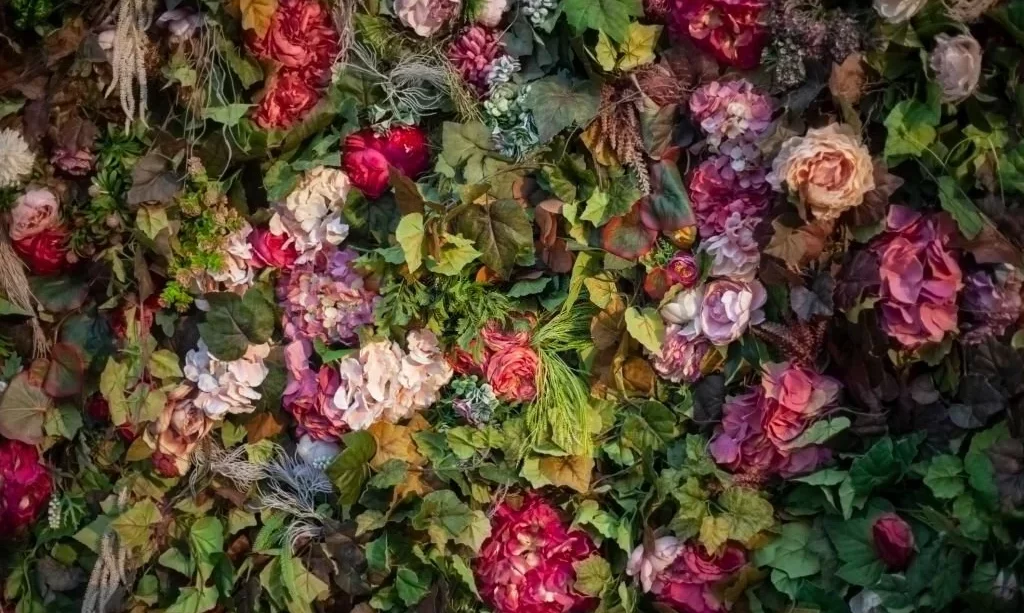Flowers, those ephemeral bursts of color and fragrance, have the remarkable ability to touch our hearts and elevate our spirits. However, their beauty is fleeting, and as they begin to wither, we’re often left wondering what to do with these remnants of botanical splendor. The good news is that the story of flowers doesn’t end when their petals fade and leaves wilt. Instead, it enters a new chapter filled with creativity and endless possibilities. In this article, we’ll explore the art of giving new life to dead flowers, turning them into treasures that continue to inspire and delight. From preserving their delicate charm to crafting with their petals, you’ll discover how to extend the life and joy of your beloved blooms beyond their fleeting moment in the vase.
Drying and Preserving
The process of drying flowers is like capturing their essence in time, preserving their beauty and sentimental value long after they’ve ceased to bloom. Drying flowers allows you to retain their delicate colors and intricate shapes, transforming them into timeless keepsakes. There are several methods to choose from:
- Air Drying: This method involves hanging flowers upside down in a dry, dark place with good air circulation. It’s perfect for blooms like roses, lavender, or statice.
- Silica Gel: Silica gel is a desiccant that gently removes moisture from flowers, preserving their shape and color. It’s ideal for more delicate blooms like daisies and zinnias.
- Pressing: Pressed flowers create delicate, flattened blossoms that are perfect for crafting. All you need is some heavy books and patience.
Once your flowers are dried and preserved, they can be used for an array of creative projects that celebrate their enduring beauty.
Crafting with Petals
Dried flower petals are like nature’s confetti, ready to add a touch of botanical charm to your creative endeavors. Crafting with these petals allows you to bring the beauty of the outdoors into your home and daily life. Here are some delightful craft projects that make use of dried flower petals:
- Pressed Flower Art: Pressed flowers can be arranged into stunning compositions and framed as art pieces. This technique allows you to create intricate designs with petals, leaves, and stems.
- Floral Candles: Infuse your homemade candles with dried flower petals. As the candle burns, the petals become translucent, casting a soft, warm glow and releasing a subtle floral fragrance.
- Homemade Paper: Add dried petals to your homemade paper for a textured, botanical touch. Handcrafted paper with embedded flowers can be used for greeting cards, journals, or special notes.
Crafting with flower petals not only channels your creativity but also connects you with the delicate beauty of nature. It’s a therapeutic and meditative process that allows you to appreciate the intricate details of each petal while creating something uniquely your own. So, don’t let those dried flowers go to waste; instead, use them as artistic inspiration and add a touch of natural beauty to your life.
Flower Petal Potpourri
One of the most delightful ways to repurpose dead flowers is by transforming them into fragrant potpourri. Dried flower petals, with their lingering scents, can infuse your living spaces with natural aromas and serve as beautiful decorations. Crafting your potpourri is a simple yet rewarding endeavor:
Begin by collecting dried flower petals from your withered blooms. Combine them with aromatic ingredients like dried herbs, spices, and citrus peels to create a captivating blend of scents. Essential oils can also be added to intensify the fragrance.
Once your potpourri mixture is ready, place it in decorative bowls or sachets. These can be strategically positioned in various rooms, closets, or drawers to enjoy their pleasant aroma.
Over time, as the scent fades, simply refresh your potpourri by adding a few drops of essential oil or stirring the contents to release the trapped fragrance. This DIY potpourri not only minimizes waste but also brings the beauty of your dead flowers into your daily life, filling your home with a symphony of natural scents.
Homemade Floral Beauty Products
The beauty of flowers extends beyond their visual appeal; their petals also hold skincare secrets. By incorporating dried flower petals into homemade beauty products, you can create nourishing and aromatic treats for your skin and senses. Here are a few ideas:
- Floral Bath Salts: Combine dried flower petals with Epsom salt, sea salt, or Himalayan salt to create luxurious bath salts. Not only do they add visual appeal to your bath, but they also infuse the water with soothing scents and skin-loving minerals.
- Facial Scrubs: Dried flower petals can be ground and mixed with sugar or oatmeal to create gentle yet effective facial scrubs. These natural exfoliants help remove dead skin cells while indulging your senses.
- Floral-Infused Oils: Create floral-infused oils by placing dried flower petals in carrier oils like jojoba or almond oil. Over time, the oil absorbs the fragrant essence of the petals and can be used as massage oil, in skincare routines, or as a soothing hair treatment.
These homemade beauty products not only offer skincare benefits but also elevate your self-care routine with the delightful scents and colors of flowers.
Composting and Eco-Friendly Disposal
For those who prioritize eco-conscious practices, composting dead flowers is an excellent option. Flowers are organic matter rich in carbon and nitrogen, making them valuable additions to your compost pile or bin. Composting flower waste not only reduces landfill waste but also enriches your compost with valuable nutrients.
To compost dead flowers, simply remove any non-organic elements like ribbons or wire and add the petals, stems, and leaves to your compost. The composting process will break down the flowers into nutrient-rich humus that can be used to fertilize your garden, supporting the growth of new life.
This eco-friendly approach to disposal respects the natural cycle of life and death, where even faded flowers contribute to the renewal of the earth. It’s a sustainable choice that allows you to give back to the environment while honoring the beauty that once graced your space.
In these ways, you can embrace the art of repurposing dead flowers, turning their fading beauty into lasting treasures for your home, body, and the environment. By doing so, you not only extend the life of these botanical wonders but also find joy in the creative process of transformation.
Flower Photography and Art
Transforming dead flowers into visual masterpieces is a captivating way to celebrate their enduring beauty. Flower photography, in particular, allows you to capture the delicate details and fading hues of petals, leaves, and stems. Whether you’re an experienced photographer or an amateur with a smartphone, there’s immense beauty to be found in the intricate patterns and textures of dead blooms. With a keen eye for composition and lighting, you can create photographs that evoke nostalgia, contemplation, and admiration for the fleeting yet profound beauty of these once-vibrant blossoms.
Furthermore, flower art allows you to immortalize the essence of dead flowers on canvas, paper, or any other artistic medium. Experiment with different techniques such as watercolors, acrylics, or mixed media to convey the ethereal quality of faded blooms. Through photography and art, you can breathe new life into your dead flowers, preserving their essence for years to come.
Memorializing and Keepsakes
For many, flowers hold sentimental value, often tied to special occasions or cherished memories. Repurposing dead flowers into keepsakes and memorabilia is a meaningful way to honor their significance. Consider creating shadow boxes, memory jars, or framed displays that showcase the beauty of dried flowers alongside mementos like photos, letters, or tokens from specific moments in time.
These creations serve as visual reminders of the love, joy, and memories associated with the blooms. Whether it’s a dried rose from a wedding bouquet or a pressed flower from a loved one’s garden, these keepsakes offer a tangible connection to the past and a source of comfort and nostalgia.
Donating to Charities
As you contemplate what to do with your dead flowers, consider sharing their beauty with those who could use a touch of nature’s charm. Numerous charities and organizations gladly accept flower donations to bring joy to people in hospitals, nursing homes, and at community events. Even faded blooms have the power to brighten someone’s day and lift their spirits.
Donating your flowers not only spreads happiness but also reduces waste and contributes to a sense of community and goodwill. It’s a heartwarming way to extend the life and impact of your dead flowers beyond your own doorstep.
Conclusion
The life cycle of flowers may be fleeting, but their beauty and significance need not fade away when the petals wither and leaves fall. Embracing the art of repurposing dead flowers allows you to continue to find joy, inspiration, and connection in these botanical wonders. Whether you choose to dry and preserve them, craft with their petals, or create lasting memories and keepsakes, you’re honoring the enduring beauty of nature in your own unique way.
In the act of repurposing, you celebrate the cycle of life and the transformative power of creativity. Each project, whether it’s a fragrant potpourri, a cherished keepsake, or a photograph capturing the delicate details of faded petals, carries a piece of the flower’s story forward. By finding new life and purpose for your dead flowers, you pay tribute to their fleeting beauty and embrace the everlasting inspiration they offer.



